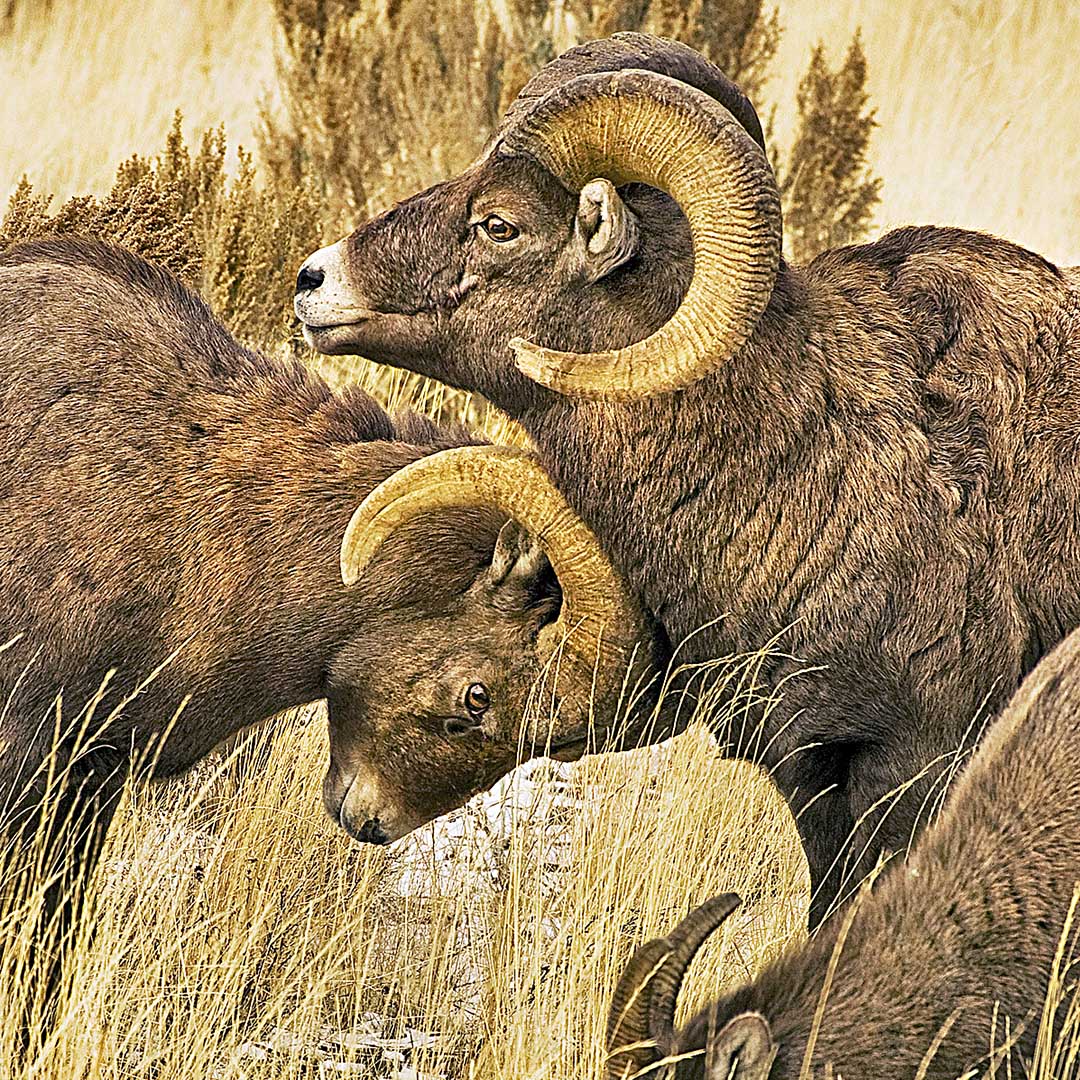|
Wyoming Bighorn in Winter - The Wapiti Valley along the North Fork of the Shoshone River, west of Cody, Wyoming, sits in the snow-shadow of the Absaroka Range and receives less snow than the Tetons and Yellowstone. Cody, Wyoming, is one of the best places for wildlife photographers to find herds of wintering bighorns in North America. One of my favorite shots was a head-to-head portrait of a mature ram and a younger ram. They held this pose for several moments. There was no head butting, just some sort of personal contact that was meaningful to them. The younger rams seem to be doing most of the head butting. If you miss the first crashing of heads, frame and focus quickly, because they sometimes try again. If your autofocus lens has trouble locking onto the animals, your lens may be trying to focus on tall grass in the foreground of your composition. If that becomes a problem, turn off your autofocus and focus manually. If their big dark eyes appear sharp, the whole image will appear sharp. For a catchlight in a dark eye, activate your camera’s built-in flash unit. At the distances you will be shooting the bighorns, a built-in flash will have little effect on your overall exposure, but it may create a catchlight in an otherwise dark and lifeless eye.
Photograph America Newsletter issue #108 - Wyoming Bighorn in Winter has the details you will need to get ready for a trip to Cody, Wyoming and a week of photographing herds of wintering bighorn sheep alongside a wild mountain river. In late October or early November, bighorns come down from the deep snows in the high mountains east of Yellowstone, when only a light dusting of snow covers Cody. Don’t miss this easy chance for some dramatic wildlife photography. Comments are closed.
|
BlogNotes and images from Bob Hitchman. Archives
July 2024
|

